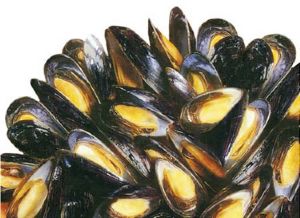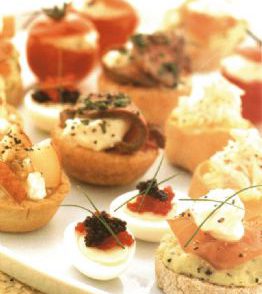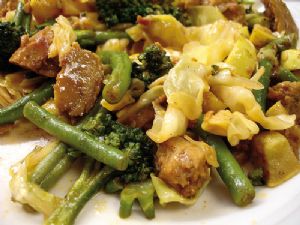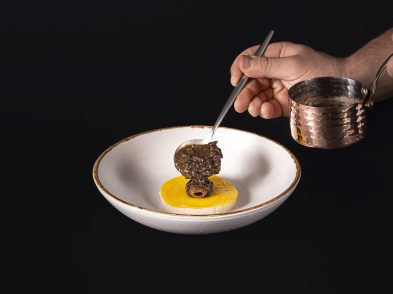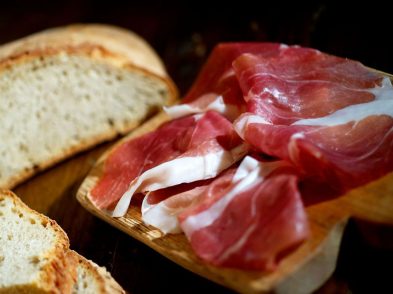Predicting food trends is a strange world to get into, and one that most food journalists steer clear of, partly because of the risk of making yourself look a bit silly (‘So, you’re trying to tell us that this is the year the electric toothbrush is finally going to find immense popularity as a cutlery item? Right.’) and also because you have to stick out a long way before anyone will believe you. Still, for every article assuring us that burrata is set to take over the world, there are some more sensible pieces of advice being offered. For example, we’re told that in the year 2009 certain types of food are going to become more popular outside of their native countries. Scandinavian and Japanese cuisines are two examples, in that they travel well and appeal to a lot of tastes, and also come with a very wide dish price range-essential now that not everyone can afford to go crazy on a meal out. Another widely roaming foodstuff is anything related to the aperitivo, about which I’ve already raved in this column many times. At the risk of repeating myself, the fact remains that it’s a completely genius idea: Want to sell people a beer? Want them to stay in your bar for a while? Why not give them some free food? As you explore Tuscan towns and cities, it’s possible to find great variation in the quality of available snacks-at best, a delicious array of fresh and preserved local delicacies, at worst a curly-edged bit of bread with some warm mayonnaise on it-but in this instance it’s not the food itself that matters, it’s the concept.
Spring is on us, and good weather can’t be too far off, but it’s still not time to hang the oven gloves up for six months and put the oven under a dust sheet. A lot of the best seasonal foodstuffs lend themselves to this style of dining, but at home with friends: selections of smaller, varied, warm salad and aperitivo-style dishes that take very little time to prepare, pack a lot of flavour into some fairly small and inexpensive dishes, and lend themselves quite well to sitting next to the window having a cool beer, a bite to eat, and an idle ponder as to whether the blue on the horizon is going to expand to fill the whole of the sky
at any point soon. Italian cuisine is heaving with warm salads, which exist in many forms depending on what part of the country you’re in, from the inspired octopus and potato salads of coastal cities and islands to more contemporary inventions such as the couscous, egg and broad bean salads you’ll find in many restaurants.
Don’t be fooled into thinking that making a warm salad should be as simple as piling lettuce and tomato into a bowl and sticking a couple of bits of grilled meat on top. While acceptable, it’s far more cost-effective and less wasteful to start by thinking about ingredients that work harmoniously together in other meals-or sauces, preserves, and so on-and then ‘deconstruct’ them into something different that doesn’t take a lot of effort. Say, for example, that you like making a tomato-based sauce with red onions, carrots, garlic, salt, pepper, vinegar and basil. You could make a salad out of this by simply slinging them into a
bowl and whirling them around a bit, but it’s far more interesting-and seasonally suitable-to then consider which of the ingredients taste better cooked and which can be left raw. Why not slow-roast the tomatoes after rubbing them with the oil and seasoning? This can be done by placing them under a very low grill, way down in the oven, for a couple of hours. While you’re at it, confit the garlic by slow-roasting it in a small dish of oil (to stop it from
blackening) and then let these complement the flavour of the raw onion and herbs.
Think about a leek, mushroom and cream sauce, which might go particularly well with pici.
Pici, cooked and drained and left to cool, makes a solid base for a warm salad which takes the component parts of this sauce. Slice the leek ultra-thin and leave it raw (it needs to be thin as they can be pretty strongly flavoured) then roast the mushrooms in the oven with parsley. Finally, add the last element by making a cool dressing from soured cream, seasoning and fresh herbs: mix the pasta and vegetables, then spoon the dressing over to coat the component parts.
Turn the usual expectation of part-raw, part-cooked salad around. Instead of dumping a can of
cooked tuna into your leaf salad, why not arrange carpaccio of the raw fish out on the plate, dress it with a little oil and seasoning, and then serve with a warm salad of tender, blanched and steamed vegetables on the side: peas, slices of gently cooked shallots, spinach, more fresh herbs. Allow this to cool a little, stir in some baby leaves, then dress it all in a rich citrus vinaigrette. Let your tastebuds lead you: the possibilities are limitless.
RECIPES
Ingredient of the fortnight: BURRATA
It looks a bit like a mozzarella, and then you stick your knife into it, and the next thing you know there’s cream everywhere. This cheese-which is, despite misgivings elsewhere in the article, currently creeping onto menus around the whole of Europe like people have just discovered buffalo milk for the first time-is an incredible thing to behold and really quite delicious, but probably best avoided if you have a lactose intolerance. Originally, it was a way to use up little scraps or rags of mozzarella-on large-scale productions, the strings of new cheese are fashioned into a vessel inside leaves (or, more commonly, plastic moulds), filled with these little scraps and then topped up with cream before being tied into a rakish knot at the top and left to sit, ready to leak all over your salads. Well worth a look: the fresh cream adds a whole new clean taste to the cheese. Try it with tomatoes or apricots.
Recipe of the fortnight:
WARM SALAD OF GOAT’S CHEESE AND BABY LEAVES
150g cooked, chopped beetroot
100g baby or small salad leaves
150g frozen broad beans
220g goat’s cheese, cut directly
from
the ‘log’ into two round chunks
A handful of shelled walnut
halves
2 tbsp chestnut honey
Salt and pepper
Cook the beans according to instructions and set them aside to cool for 10 minutes.
Place a sheet of oven-proof baking paper on a tray. Set the goat’s cheese on top of this, then
pour over the honey, coating the logs well. Add salt and pepper and finally top each with one walnut half. Place this in a hot oven for 5 minutes or until starting to bubble and go golden brown near the edges.
Mix the leaves with the beans and beetroot and arrange on two plates. Sprinkle the remaining
walnuts around this and season. Set the cheese rounds on top of these and serve.

